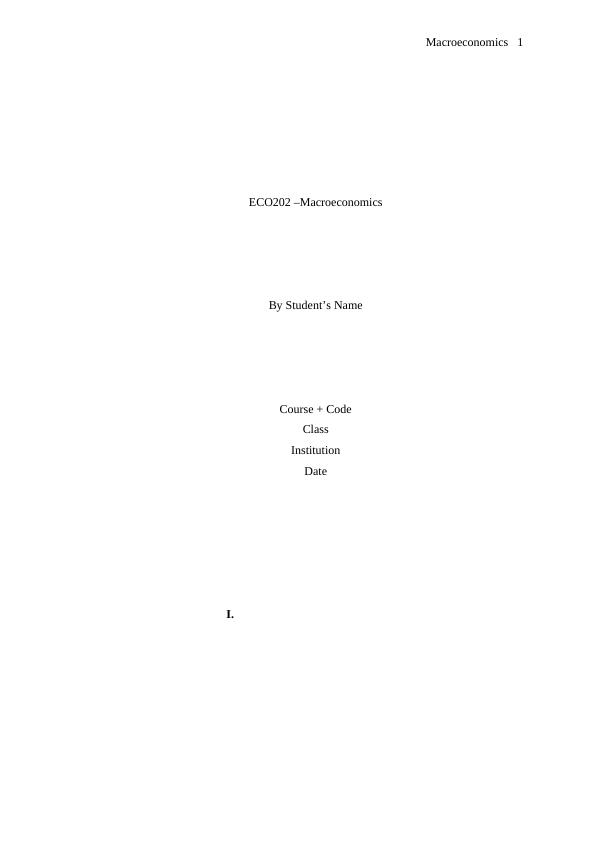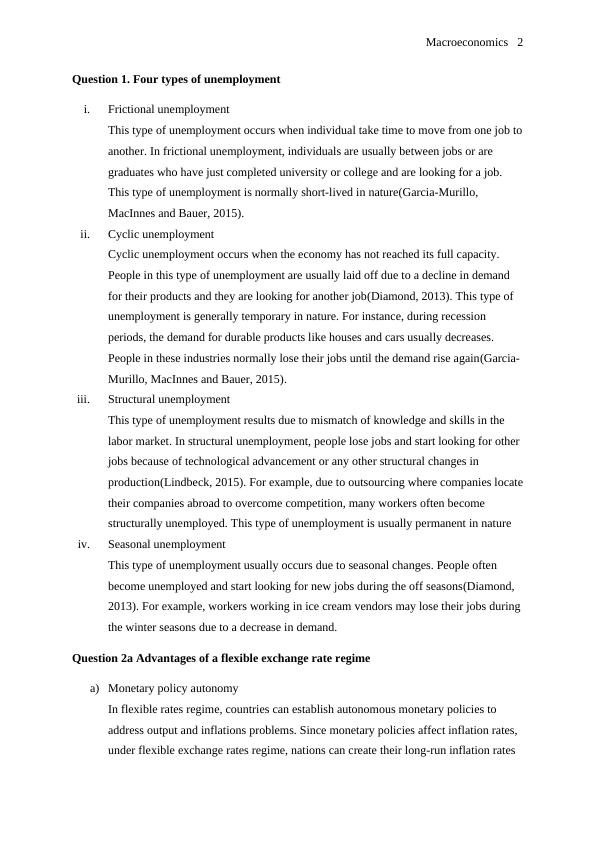Macroeconomics 1
Explains the Harvard referencing system and provides examples of referencing in the body of an essay, referencing an idea, referencing a quotation, and citing a source within a source.
7 Pages1563 Words331 Views
Added on 2023-06-04
About This Document
This article covers four types of unemployment, advantages and disadvantages of flexible and fixed exchange rate regimes, and the relationship between interest rates and exchange rates in Macroeconomics 1. It discusses how frictional, cyclic, structural, and seasonal unemployment occur and how flexible exchange rates promote economic development, monetary policy autonomy, and international trade. It also explains how fixed exchange rates provide currency stability, prevent currency depreciation, and promote responsible macroeconomic policies. Finally, it explores the relationship between interest rates and exchange rates and how the Reserve Bank of Australia's interest rate increase affects the Australian dollar exchange rates.
Macroeconomics 1
Explains the Harvard referencing system and provides examples of referencing in the body of an essay, referencing an idea, referencing a quotation, and citing a source within a source.
Added on 2023-06-04
ShareRelated Documents
End of preview
Want to access all the pages? Upload your documents or become a member.
Macroeconomics: Assignment Sample
|7
|1228
|375
Types of Unemployment, Advantages and Disadvantages of Flexible and Fixed Exchange Rate Regime, Impact of Interest Rate on Currency
|5
|1192
|330
The skills like electrical mechanical skills
|7
|1109
|13
Macroeconomics of Malaysia : Report
|10
|3020
|53
Types of Unemployment in the USA and Policies to Overcome Them
|12
|1935
|434
Economics: Analysis of GDP, Unemployment, Inflation, and Aggregate Demand and Supply
|10
|1585
|95



